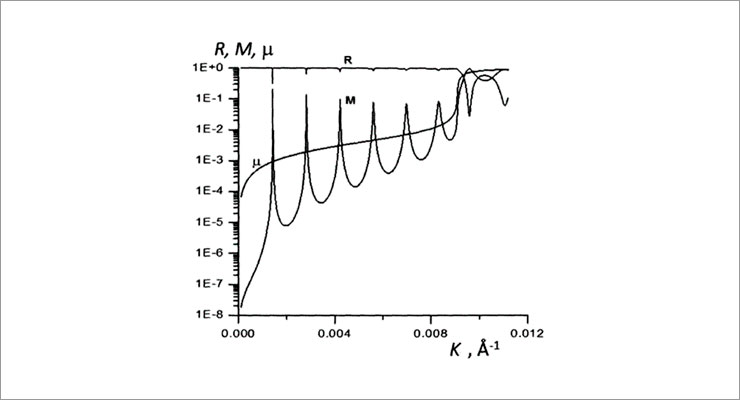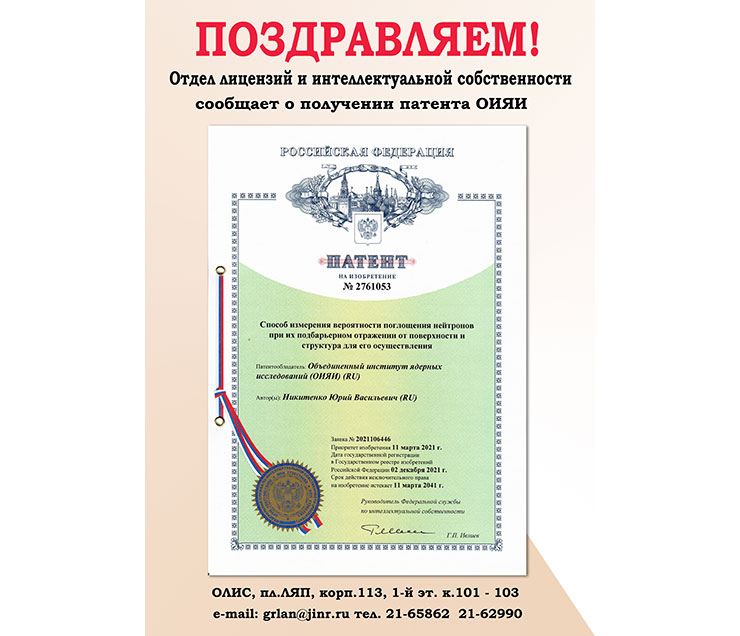New method for measuring losses in cold neutron storage ring
News, 28 January 2022
A new wave resonator has been developed at JINR. It was created to measure the probability of absorption and scattering of neutrons in the storage ring of cold neutrons at the new research reactor NEPTUNE (IBR-3) being developed at the Frank Laboratory of Neutron Physics JINR. The device, with a three-layer planar structure, increases the sensitivity of measurements up to 1,000 times. This allows designing a storage device on a qualitatively new level.
Neutrons are widely used in a variety of studies of matter: from the nuclei structure and fundamental interactions to the condensed matter structure and dynamics, including crystalline states, liquids, and soft matter. Ultracold neutrons discovered in 1968 at FLNP JINR are used in fundamental research. These include, for example, the neutron lifetime measurements, the determination of the electric dipole moment of the neutron, and the probability of neutron transformation into a mirror neutron. At present, scientists are showing more and more interest in the use of cold neutrons, which are “more energetic” than ultracold ones.
During the research process, cold neutrons are accumulated in special ring accumulators. The possibility of installing such a neutron storage ring is being considered at the new NEPTUNE pulsed batch reactor (IBR-3), which is being developed at the Frank Laboratory of Neutron Physics.
Cold neutrons can be kept in a storage ring for a long time, sufficient to detect the transformation of a neutron into a mirror neutron. However, the neutron lifetime in the storage ring is limited by their absorption and scattering on the walls of the storage ring. In this regard, it is important to determine the probabilities of absorption and scattering of neutrons during their almost complete reflection from the surface of the material, when the kinetic energy of neutrons does not exceed the potential energy of interaction. It is known that for the materials used, the absorption and scattering probabilities have extremely small values ~10-4 — 10-6. To measure such small quantities, it is proposed to use a wave resonator with a three-layer structure. In this structure, the layers along the edges are made of the material under investigation, and the middle layer has a relatively small interaction potential compared to the outer layers. Neutrons in the resonator are in a potential well and are repeatedly reflected from the studied outer layers. As a result, the probabilities of absorption and scattering of neutrons increase by 100-1,000 times, which makes it possible to measure them. Such a resonator was developed by Yuri V. Nikitenko, a leading researcher at FLNP JINR. He received patent No. 2761053 for the invention “Method for measuring the probability of absorption of neutrons during their sub-barrier reflection from a surface and a structure for its implementation”.
As part of the development of such resonators, layered resonator structures Cu(30nm)/Al(40nm)/Cu(100nm) are currently being studied. The first data indicate that the probabilities of absorption and scattering of neutrons for copper layers increase to ~10-3. Further research with other materials is to be carried out, as well as the improvement of the technology for manufacturing resonator structures. At the same time, a design of a ring storage model is currently being developed. Model studies make it possible to refine the characteristics of the surface of the storage ring reflecting neutrons under real conditions.

